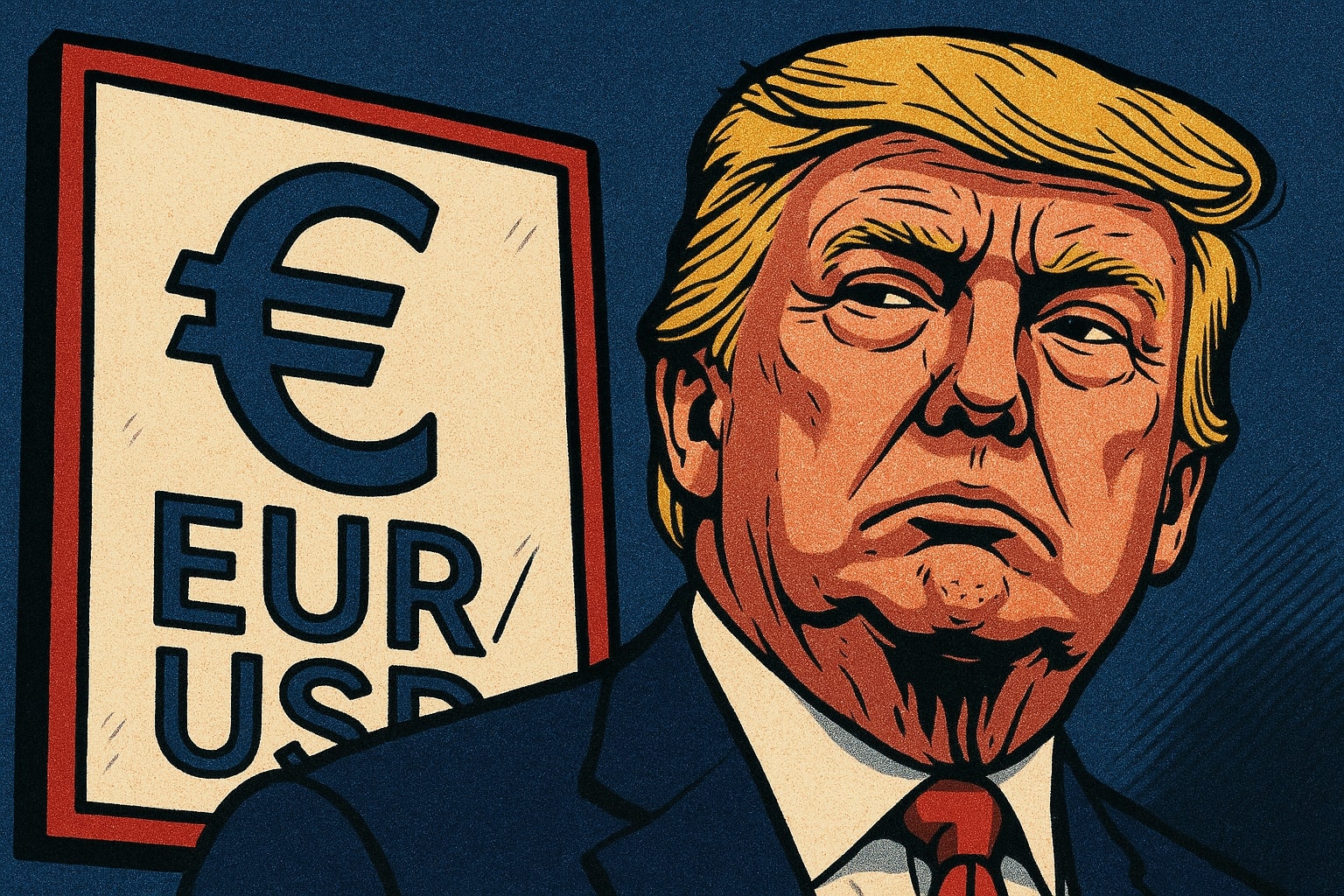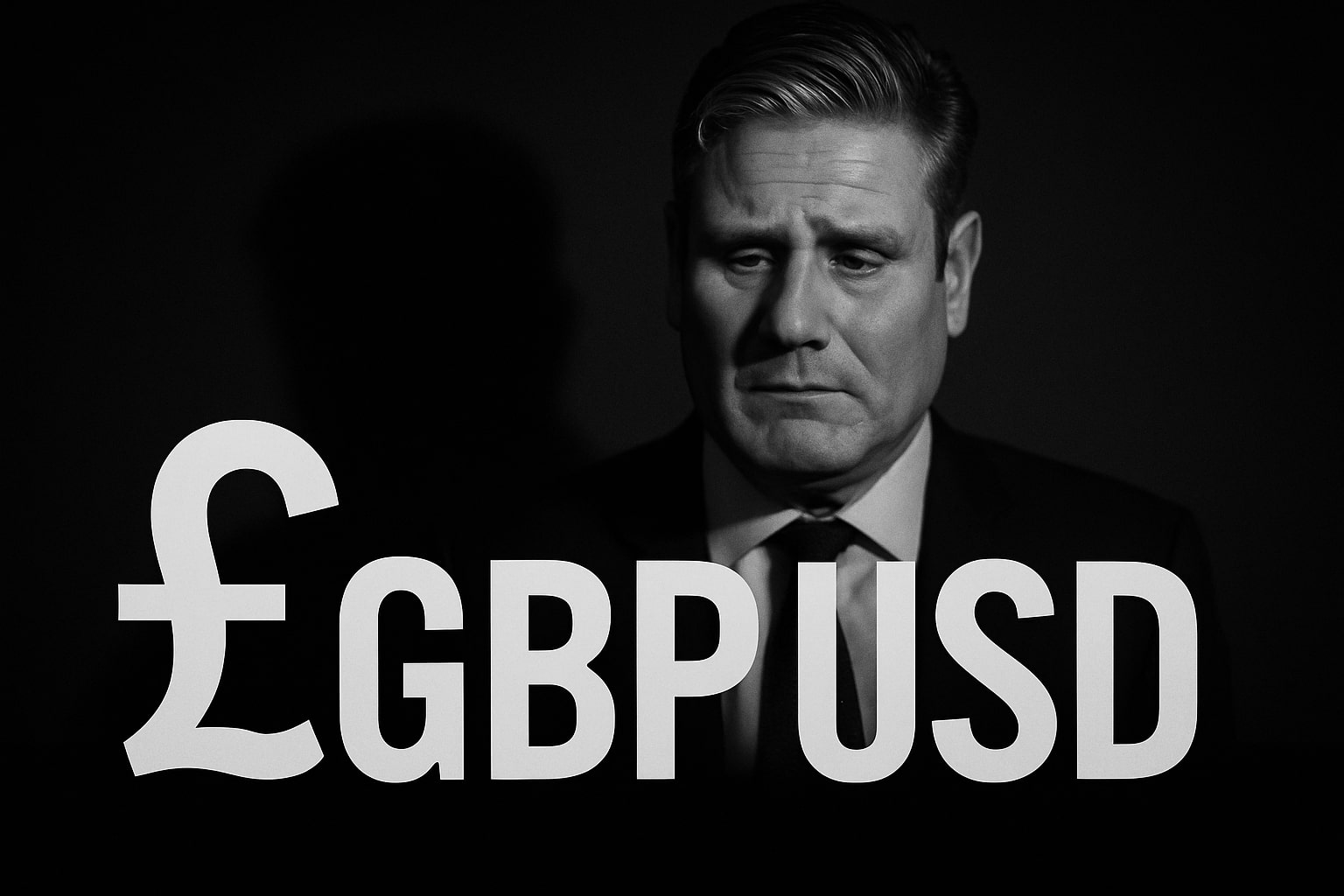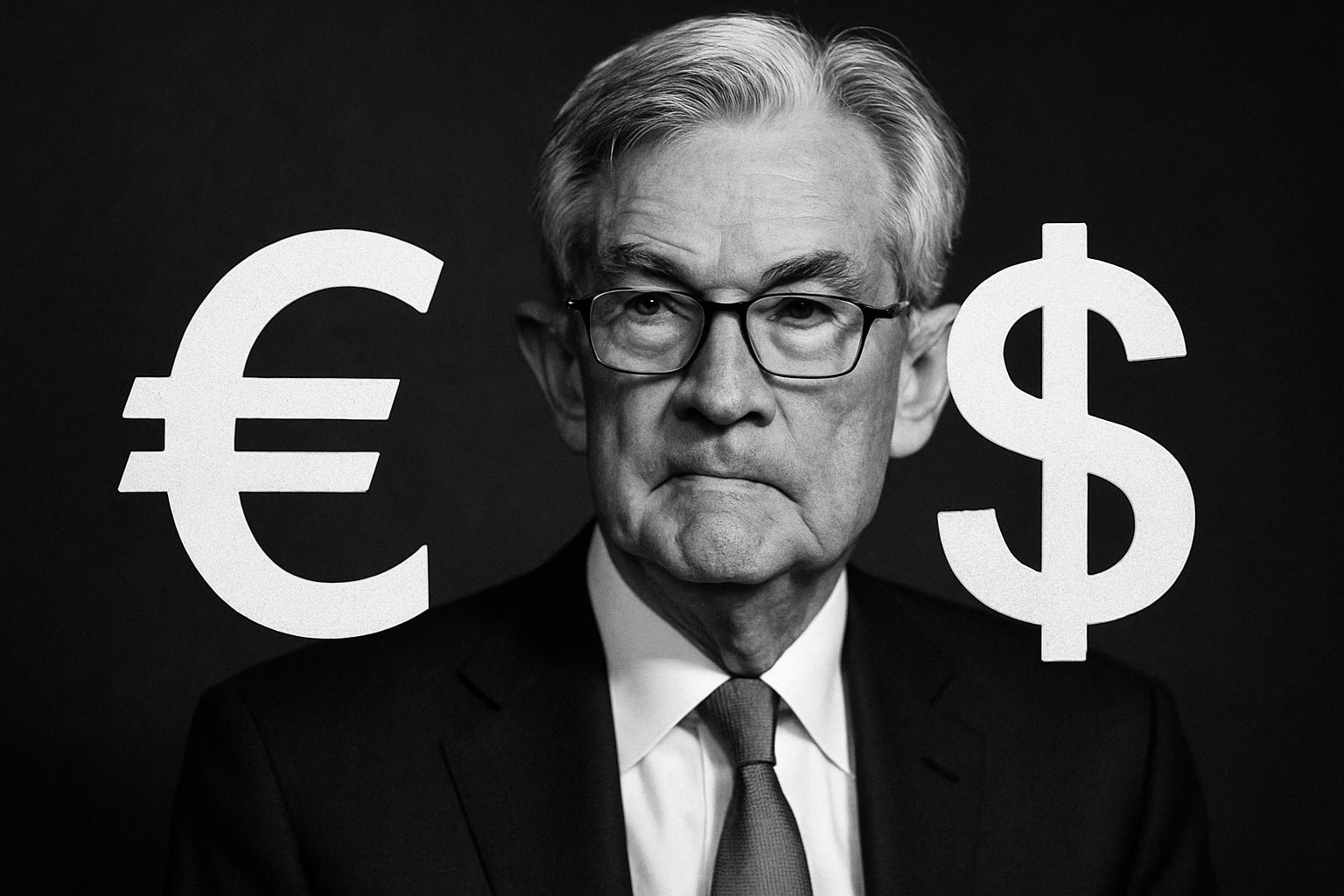EUR/USD Surges to 1.1714 as Fed Doubts, Trump Threats Crush Dollar Support
EUR/USD climbed to 1.1714, gaining for the seventh straight session, as investors rotated out of the U.S. dollar amid escalating policy uncertainty. The pair is up 2% weekly, targeting a retest of the 1.1745 resistance—its highest mark in nearly four years—driven by collapsing confidence in the Fed’s autonomy and growing bets that 64bps of cuts are coming before year-end. The U.S. Dollar Index (DXY) slid toward 97.22, marking a fresh 3.5-year low, as futures markets began to price in political risk alongside weakening economic data.
Trump Pressure and Powell Replacement Rumors Break Fed Neutrality Narrative
President Donald Trump’s renewed criticism of Fed Chair Jerome Powell, paired with rumors of a pre-term replacement in September or October, have stunned markets. While not yet confirmed, the signal is clear: Trump wants a pivot to a more dovish Fed chair. This narrative has injected volatility into forward rate expectations. Traders now assign a 25% probability of a July rate cut, up from 12% a week earlier, while full-year pricing reflects 64bps of total easing. This realignment of rate bets has put the dollar under sustained pressure and driven significant outflows into euro-denominated assets.
Core PCE in Focus as Fed’s Inflation Bias Faces Gloomy GDP and Confidence Data
Attention now turns to the U.S. Core PCE Price Index, expected at 0.1% MoM and 2.6% YoY. Any downside miss could further unwind the Fed’s hawkish positioning and deepen USD weakness. Supporting this setup is the revised Q1 GDP contraction of -0.5%, worse than the prior -0.2%, and a slump in consumer confidence reported by the Conference Board. Even though durable goods orders jumped 16.4%, the spike was largely driven by volatile aircraft orders, leaving core growth dynamics unconvincing. The Fed is now cornered between weak growth and sticky inflation, especially as PCE is its preferred inflation gauge. Market sensitivity is now tightly bound to this upcoming report.
Eurozone Growth Bets Gain Tailwind from Fiscal Push and Iran-Israel Truce
On the euro side, fundamentals are turning more constructive. The truce between Israel and Iran has reduced geopolitical risk premiums and helped cap energy costs. Meanwhile, the Eurozone's fiscal outlook has brightened, with expectations for infrastructure and defense investments to be approved post-summer, potentially lifting regional GDP over the next four quarters. While EU-UK trade talks remain gridlocked, there is no active deterioration. Investors view this stability, combined with fiscal impulse, as a meaningful euro support factor in contrast to the political overhang in Washington.
EUR/USD Technical View: Momentum Intact as 1.1650 Zone Becomes Key Bull Base
The EUR/USD 4-hour chart reveals ongoing strength above the ascending trend channel, with buyers defending the $1.1680–1.1700 zone. The 50-period EMA sits near $1.1637, providing a dynamic base that has rejected four previous pullbacks. RSI remains near overbought territory, hinting at short-term exhaustion, but no reversal signal has triggered yet. Immediate resistance rests at $1.1745, the yearly high. A break there exposes $1.1782 and $1.1828, the latter a multi-year structural barrier. On the downside, supports stack at $1.1650, $1.1629, and $1.1590, the final pivot before the bullish setup degrades. Volatility is expected around the next PCE print, but as long as the 20-period SMA holds, momentum favors further upside.
Currency Performance Table Highlights Euro Strength Across Majors
Cross-performance data shows EUR gaining +0.35% vs AUD, +0.26% vs CAD, +0.24% vs JPY, and +0.18% vs USD. Against the CHF, euro fell -0.15%, reflecting typical safe-haven behavior amid market uncertainty. Broad strength in EUR reflects not just dollar weakness but also growing conviction that the euro zone may become a relative growth outperformer in H2. Institutional flows are beginning to shift in that direction, with portfolio managers trimming USD allocations in favor of higher-yielding euro sovereigns, especially if ECB holds rates longer than the Fed.
Fed–ECB Divergence Back in Play as Political Risk Tilts Rate Path
Markets are re-pricing divergence risk: while the Fed's independence looks increasingly fragile, the ECB appears committed to maintaining its current stance with no new easing expected before year-end. This divergence is now embedded in swap spreads and FX forwards, and the yield advantage once enjoyed by the dollar is fading. With U.S. real rates expected to fall, capital rotation may accelerate, especially if the next few data prints confirm disinflation alongside contraction.
EUR/USD Bias Shifts Aggressively Bullish as 1.1800–1.2000 Reemerge as Price Targets
Given the weakening U.S. backdrop, structural eurozone tailwinds, and technical confirmation, EUR/USD bias has shifted sharply bullish. Momentum targets now include 1.1800 as the next tactical ceiling, followed by 1.2000—a key psychological barrier last touched during mid-2021. Options market activity also confirms this directional conviction: bullish skew on 1-week and 2-week call spreads has risen significantly, reflecting trader expectations for a breakout.
Buy/Sell/Hold Verdict on EUR/USD: Strong Buy as Fed Weakens and Eurozone Firms Up
Based on every macro, political, and technical input above, EUR/USD = Strong Buy. The current quote near 1.1714 remains well below the 1.1800–1.2000 breakout zone, offering attractive upside in the near and medium term. Rate futures show 64bps of Fed cuts priced in, with mounting speculation that Powell could be removed before year-end. Meanwhile, Eurozone fiscal support and geopolitical de-escalation favor continued strength in EUR.
The technical structure is bullish, with no major overhead resistance until 1.1782 and 1.1828, and structural support layered from 1.1650 to 1.1590. The U.S. Dollar Index at 97.22 signals capitulation, not just consolidation. With PCE data and Trump’s interference damaging Fed credibility, the USD is losing its policy premium. This is not a short-term fade—it’s a structural re-pricing of central bank independence.
Unless PCE inflation comes in dramatically above 2.6%, the bullish thesis holds. Buy EUR/USD on dips toward 1.1650, with targets of 1.1800 short term and 1.2000 medium term.




















